How do allergy tablets work?
.png?v=1669980200249)
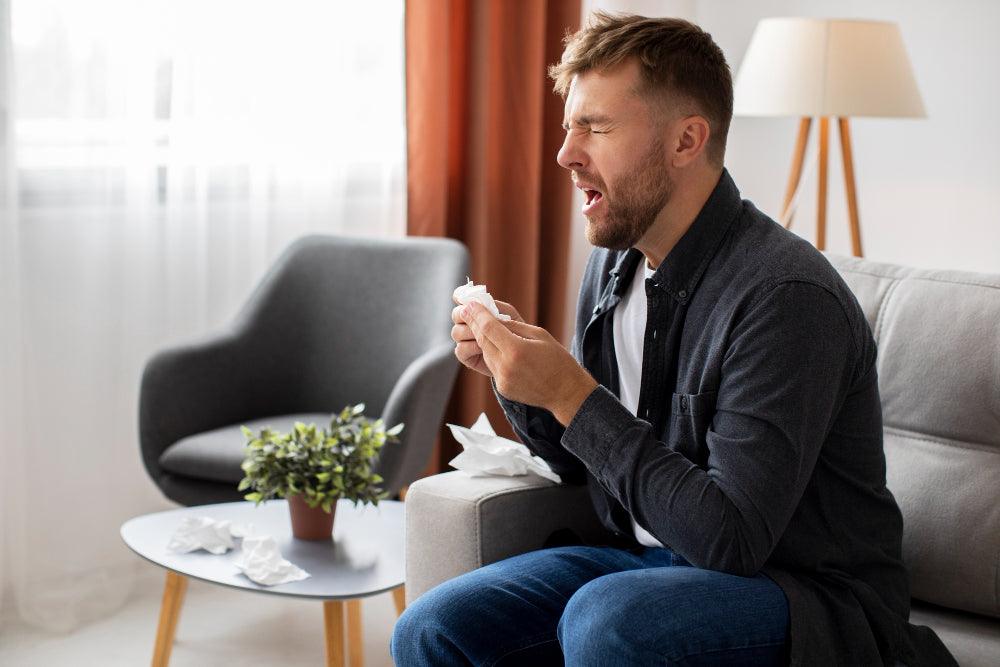
Related products
What’s covered? How do allergy tablets work?
Have you ever heard from your relatives that they can not keep a pet in their house? Or do you have a friend who can not go outside without wearing a mask during the spring season? We've all seen these people around us, and we all wonder why they do so.
The answer is simple—they are allergic. As per the stats of the UK government, 21 million British people have some allergy. It means that every 1 in 3 people is allergic. This growing prevalence falls under the broader category of Hayfever & Allergy conditions, which affect both children and adults.
They take all the precautions to prevent themselves from the severe symptoms of allergy. Some of them also take allergy tablets to treat them. Let's explore the topic to understand how these allergy tablets work.
What are allergic reactions?
The air around us is not pure. It contains many dirt particles and micro by-products of human and animal activities. For most humans, these particles are non-toxic. But some people get affected by these harmless particles and become ill.
Such people are called allergic. Allergic persons have a susceptible defence mechanism. Their body's immune system responds aggressively towards non-toxic particles, producing too much histamine, which ultimately produces allergic symptoms. The harmless molecules which trigger the allergy symptoms are called allergens. The appearance of allergic symptoms after interacting with the allergens is called an allergic reaction. This area continues to be studied in-depth by experts like those from the Allergy Research Group, who contribute to advancing the science of allergies and immune response.
Types of allergic reactions:There are four types of allergic reactions with a wide range of severity. Some have mild symptoms, while some have life-threatening severe symptoms.
1. Anaphylactic reactions:
In anaphylactic reactions, the body reacts to specific allergens and gives an immune response. The body produces histamine along with other mediators, which causes swelling in particular organs and rashes on the skin.
It is the most common type of allergy. Examples of anaphylactic reactions include;
-
Food allergy
-
Asthma
-
Specific skin issues like eczema
-
Hay fever
-
Some food allergies can even cause rare metabolic disorders
2. Cytotoxic reactions:
In this allergic reaction, the IgG and IgM antibodies react with the antigen (allergen), and a chain of defence mechanisms occurs in the body that can lead to death. Allergic symptoms appear after a few hours.
Examples of cytotoxic reactions include;
-
Reaction to penicillin
-
Autoimmune haemolytic anaemia
-
Graves disease
3. Immune Complex reactions:
The third type is a hypersensitivity reaction. As its name indicates, an immune complex (antigen-antibody aggregate) forms during the reaction. The symptoms are very severe.
Examples of complex immune hypersensitivity include;
-
Farmer's lung erythematosus
-
Rheumatoid arthritis
-
Drug-induced Serum sickness
4. Cell-mediated allergic reactions:
Cell-mediated hypersensitivity is a delayed type of allergic reaction. Symptoms may take 24-48 hours after contact with the allergen. No antibodies are involved in this hypersensitivity reaction.
Examples of type 4 hypersensitivity include;
-
Dermatitis
-
Mismatched organ transplant
-
Pneumonitis
What causes an allergic reaction?
We have a defence mechanism in our body called the immune system. This system is responsible for protecting us from any toxic molecule that can harm us. When this system becomes overly sensitive to unharmful foreign particles, allergic reactions occur.
These harmless particles could be;
-
Pollen
-
Pet dander
-
Dust
-
Mites
-
Food particles (fish, mushrooms, chocolates, eggs, soya beans, etc.)
-
Some fragrances
-
Certain clothes (latex or rubber)
-
Spores of moulds (penicillin)
-
Insect bites, faeces, and stings
Role of histamine in allergy:
The body starts producing a chemical mediator known as histamine whenever the allergic person's immune system detects any allergen. It is released along with other chemicals and is stored in the mast cell.
The function of histamine is to eliminate any molecule from your body causing an allergy. It mediates symptoms like a runny nose, red eyes, and nasal congestion. It can also mediate life-threatening symptoms as well, like anaphylactic shock.
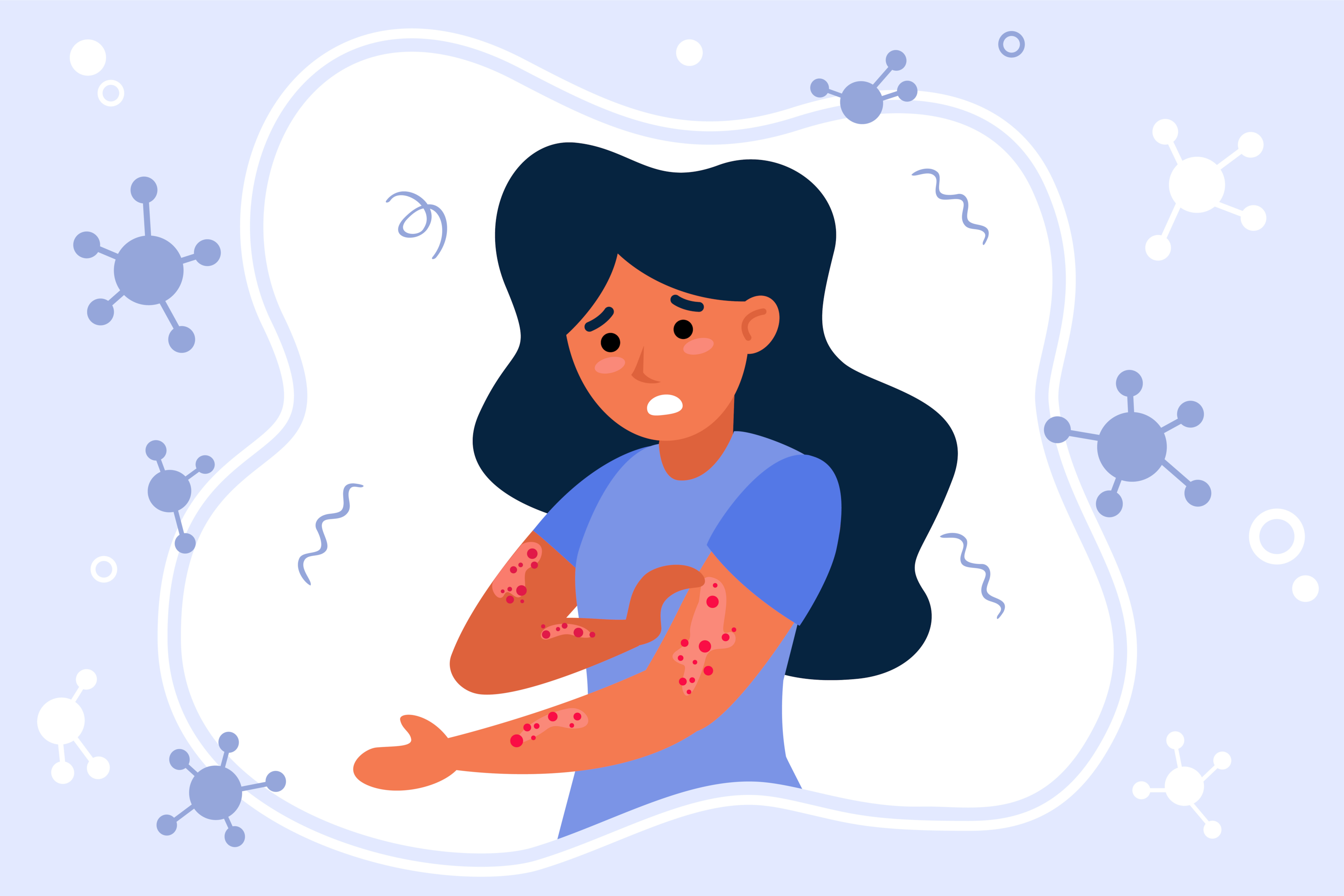
What are the symptoms of the allergic reaction?
The allergic symptoms depend upon the type of hypersensitivity reaction you have. The allergic symptoms can occur in any body organ, including external and internal body parts. At the same time, symptoms depend upon the type of allergy. Type 1 produces mild to moderate symptoms, while types 2, 3, and 4 may have lethal signs.
The most common allergic symptoms include;
-
Watery, red, and itchy eye
-
Runny nose
-
Skin rashes
-
Difficult breathing
-
Swelling
-
Nausea and GI issues
-
Unconscious and headache
-
Sneezing
-
Nasal congestion
-
Dry mouth
Other symptoms of allergies are;
-
Hay fever
-
Allergic conjunctivitis
-
Pneumonia
-
Intense itching
-
Heart attack
-
Nervous breakdown
-
Anaphylaxis (rare and lethal)
-
Rhinitis
What are the treatments for allergic reactions?
The traditional way to treat allergic symptoms is to remove yourself from the allergen. If you are allergic to animal dander and have asthma, you should maintain distance from animals. If someone is allergic to a particular food item, avoid eating them. If you have a pollen allergy, then wear a mask during the season in which the pollen count is higher.
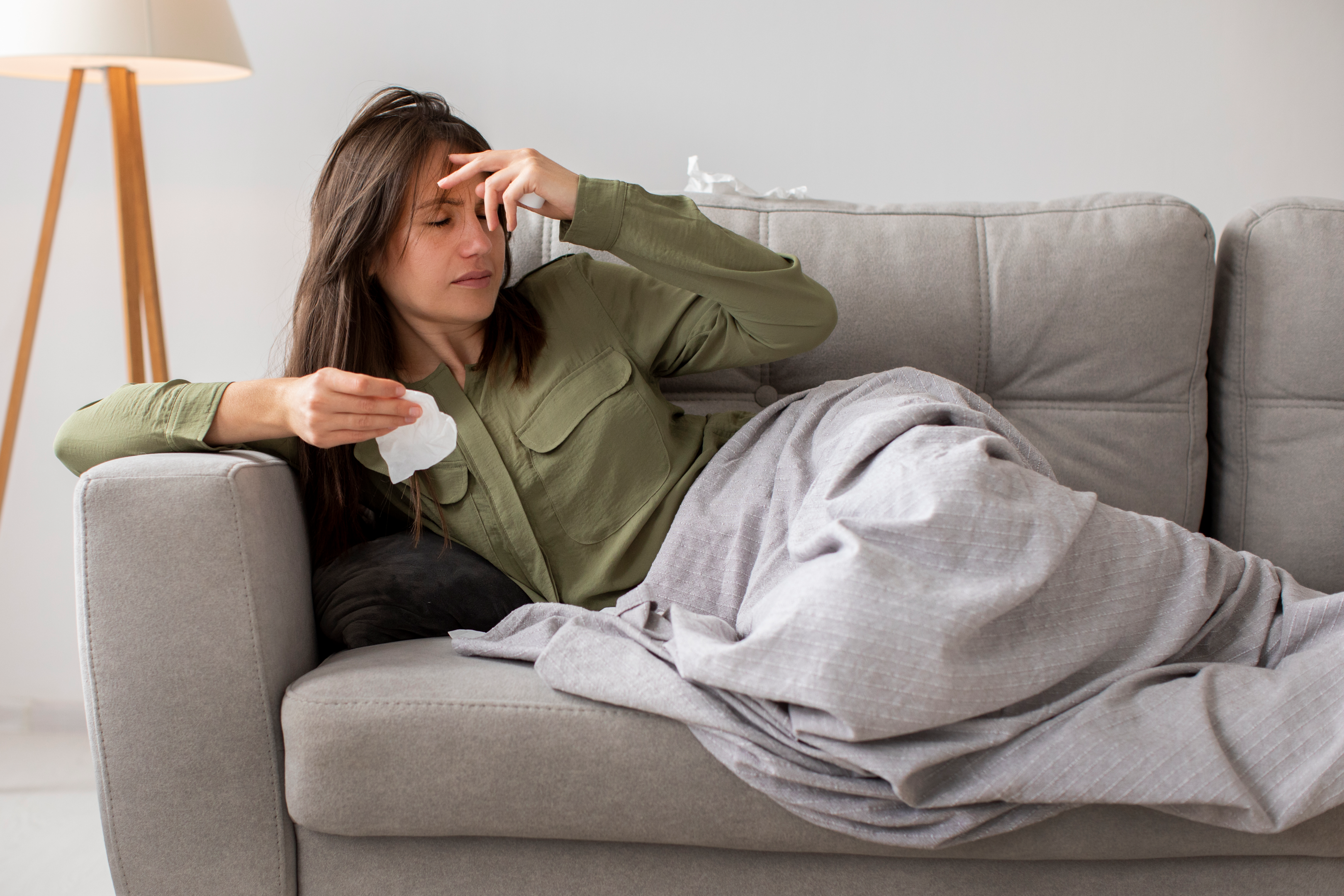
But if somehow you have contracted the allergen, and your body has started a defence mechanism against these so-called "toxic particles," you will need some medications to cure the symptoms.
The two most common types of allergic treatments are;
-
Immunotherapy
-
Antihistamines
Antihistamines:
Allergic symptoms appear due to the excess release of histamine. Therefore, doctors prescribe antihistamines to counter the symptoms. Taking antihistamines can relieve allergic symptoms.
Types of antihistamines:
We have old and new antihistamines available. These are classified on the type of receptors they block. We have classes of antihistamines;
-
H 1 receptor antagonist: These antihistamine blocks histamine type 1 (H 1) receptors and is used to treat symptoms like asthma, rhinitis, and allergic swelling.
-
H 2 receptor antagonist: These antihistamines can block histamine type 2 (H 2) receptors and are used to treat gastrointestinal allergic symptoms like peptic ulcers and peptic acid disease.
The histaminic type 1 (H 1) antagonist can be further classified into two generations.
First generation antihistamines:
These are first-generation because they were first approved by the FDA (food and drug authority). The first-generation antihistamines block two types of receptors, namely;
-
Muscarinic receptor
-
Histaminic receptor
These antihistamines can even block the receptor of the brain and spinal cord. The few characteristics of first-generation antihistamines are;
Second generation antihistamines:
Approved after first-generation, second-generation antihistamines can block histamine in the brain and spinal cord.
The unique characteristics features of Second-generation antihistamines are;
They exert an effect in just 30 minutes
-
Its effect last for about 24 hours
-
Available in all dosage forms
-
More effective than 1st generation
-
Have significantly fewer side effects than 1st generation
-
It can relieve symptoms like runny rose, watery eyes, and shortness of breath
Antihistamines are available in the following dosage forms;
-
Tablets
-
Nasal sprays
-
Skin creams
What are antihistamines tablets?
The most common dosage form for relieving allergic symptoms is oral or sublingual. Antihistamine tablets can help with allergic signs like runny nose, chest congestion, cough and sneezing, and other hypersensitivity symptoms.
Many allergy pills are available as over-the-counter drugs. You can buy them without a prescription, whereas some antihistamines require a verified prescription from a healthcare professional or an allergist.
Side effects of antihistamines are;
-
Unconsciousness
-
Migraine
-
Rapid heart rate
-
Low blood pressure
-
Swelling of the mucous membrane of airways
Immunotherapy and allergic reactions:
Immunotherapy is a way to develop tolerance in an allergic person. The easiest way is to give a minimal amount of the allergen. Your body somehow reacts to this allergen and produces symptoms. But upon regular contact with the allergen, your body will become used to it and make no other symptoms.
Immunotherapy is considered the most successful cure for allergic reactions. Two ways of immunotherapy are being used;
-
Subcutaneous immunotherapy (SCIT)
-
Sublingual immunotherapy (SLIT)
What does SLIT contain?
Allergy tablets contain a tiny amount of the allergen. The pill can alter the immune response and decrease harmless particles' sensitivity. Currently, in the United Kingdom, six types of allergic tablets are being used effectively for the treatment of allergies;
-
Grass allergy tablet: It is similar to a hay fever tablet
-
Ragweed tablet: It is made up of short ragweed pollen
-
House Dust mite tablets: It is made up of dust mite allergen
-
Hay fever tablets: It is made up of timothy grass extract
-
Birch tree pollen tablet: It is made up of silver Birch pollen extract
How does a SLIT tablet work?
These tablets are given in Sublingual Immunotherapy hence known as Sublingual Immunotherapy (SLIT). These pills work by developing immunity against the non-toxic allergen.
Mechanism of action of allergic tablets:
When the patient takes the tablet, an increased IgE in the blood is detected. This IgE will eventually decrease upon several intakes of the tablet.
For instance, if someone is allergic to ragweed, that person will be given immunotherapy with the ragweed tablet. The tablets contain a minute quantity of the ragweed. When the immune system recognizes the ragweed as a harmful toxin, it will produce histamine, which develops symptoms like runny nose, watery asthma, and difficulty breathing.
Upon the regular intake of ragweed tablets, the defence mechanism will become aware of it and will not produce symptoms the next time. This mechanism of action of the allergic tablets is somewhat similar to the vaccination.
What is the way to have an allergy tablet (SLIT)?
The part below your tongue is known as the sublingual area. This area is richly supplied with blood vessels. When you place this tablet in your sublingual part, it is absorbed in the blood. The allergist suggests keeping the tablet for at least a minute in your sublingual area. Afterwards, you can swallow and can not eat or drink anything for 20-30 minutes after swallowing. Though these pills are safe and produce no to fewer side effects, it is still better to take the first dose of the allergic tablet under the supervision of a doctor.
How long is the onset of action of allergy tablets?
The medicines placed under the sublingual area give rapid onset of action. But the case of allergy tablets is different. It is a long-term process. The desensitisation of the immune system requires at least six months. One should start immunotherapy through allergy tablets four months before the pollen season. This process continues throughout the spring season. Complete resistance against the allergen can take up to three years.
Which type of allergy can be treated by SLIT?
Type 1 hypersensitivity can be treated by SLIT. The atopic disorders caused by pollen, dust, and animal dander positively respond to the tablets. Work on SLIT to make it treat other types of hypersensitivity is going on.
What are the benefits of SLIT?
Because of the following mentioned benefits, SLIT is preferred;
-
This is the only method to desensitise the immune system
-
It shows fewer side effects
-
It is equally safe for children and adults
-
It can improve the quality of life
What are the drawbacks of SLIT?
Though it can desensitise the defence mechanism, it can not cure other allergies like asthma, rhinitis conjunctivitis, and food allergies. Scientists are researching these allergens and hoping to develop SLITs for those atopic symptoms.
What kinds of tests are used to detect allergies?
To get the appropriate medicines, one should get an allergy test to identify the type of allergy they are suffering from. There are five types of allergy tests that use allergens to detect the allergy type. These are;
-
Skin prick test: A solution containing an allergen is placed on the skin and pricked from a needle. A red itchy bump on that area indicates a positive result
-
Patch test: A metallic strip containing an allergen is tapped on the skin. The appearance of the itchy patch indicates contact dermatitis
-
Blood test: Antibodies or antigen-antibody complexes are checked after contact with the allergen. If present, the test is considered positive
-
Challenge test: It detects food allergies by feeding different foods to the allergy patient
-
Elimination test: Certain food items are eliminated from the diet to check the appearance of allergic symptoms
Can I check allergies at home?
Absolutely! We recommend you take a look at our home Allergy Test kits for effective and convenient allergy testing. These kits can efficiently detect the amount of IgE antibodies in your blood, which is the most prominent indicator of an allergic reaction.
While using these kits, remember that the IgE amount alone cannot determine the exact type or source of your allergy. Only a qualified doctor or allergist can make an accurate diagnosis based on test results, symptoms, and your medical history. However, these tests are a great first step in identifying potential triggers and deciding whether further specialist consultation is needed.
Recommended Home Allergy Test Kits:
-
IgE Immunoglobulin Blood Test
This test measures total IgE levels in your blood to screen for allergic responses. It's ideal for individuals with general allergy symptoms who want to explore possible immune reactions. Suitable as a starting point for allergy assessment. -
Combined Allergy and Intolerance Blood Test
Covers a wide range of allergens including food and environmental triggers. Great for those unsure whether symptoms are due to allergy or intolerance. It gives a broad overview of your immune response. -
Food Intolerance Test
While not IgE-based, this test evaluates IgG responses to common foods, helping identify delayed food-related symptoms. Ideal for bloating, headaches, or skin issues. Best combined with IgE testing for full clarity. -
Premium Intolerance Test
Tests over 200 food and non-food items for potential intolerances. A detailed and in-depth option for those with chronic unexplained symptoms. Offers insights beyond typical allergens for a comprehensive wellness approach.
Conclusion:
To conclude, if you are someone suffering from any allergy, do not ignore the symptoms, as they may lead to further complications. Try to consult a professional allergist who would assist you in managing the allergy signs. It can make your daily life more convenient, and do not forget to take your daily anti-allergy pills.






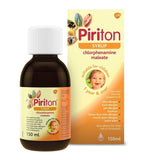

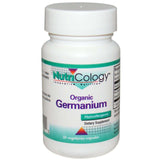
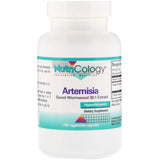



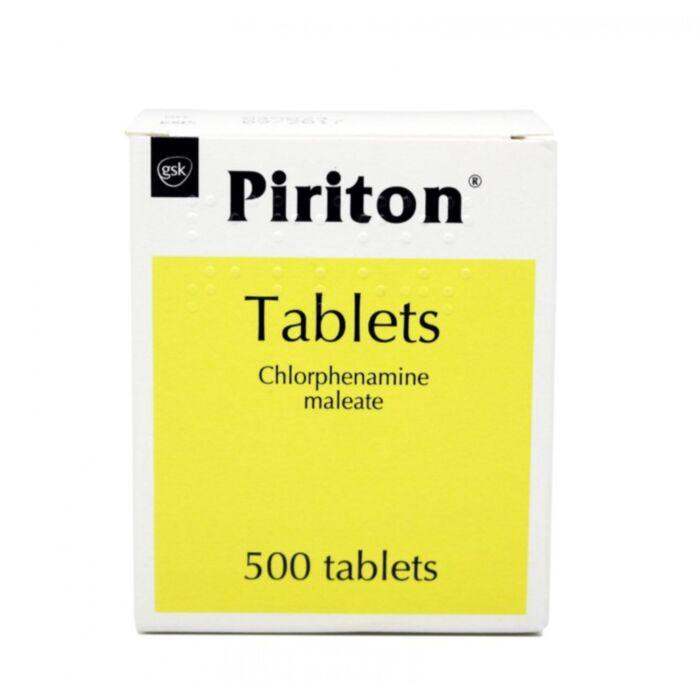



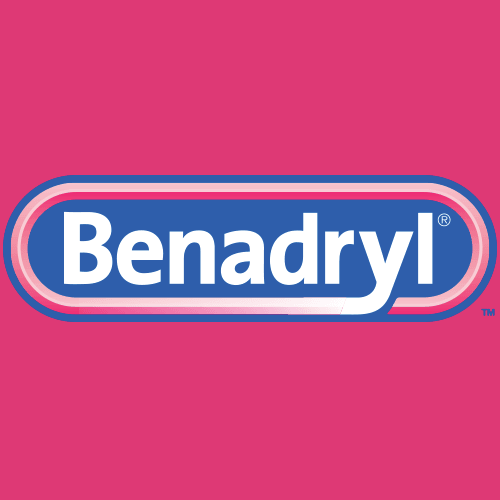




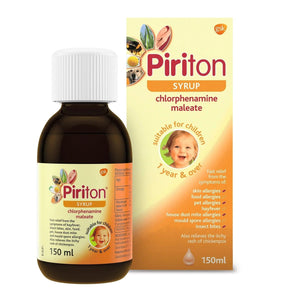

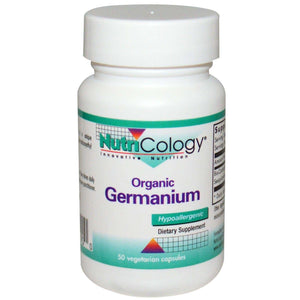
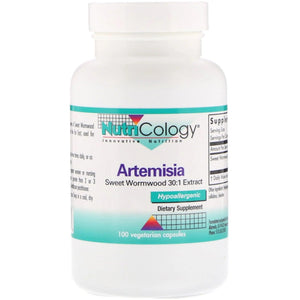
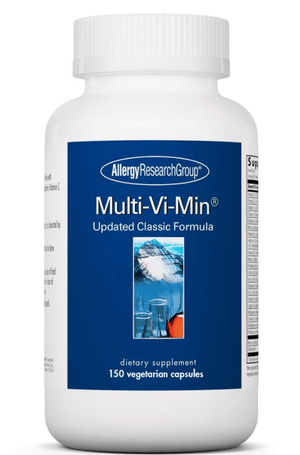


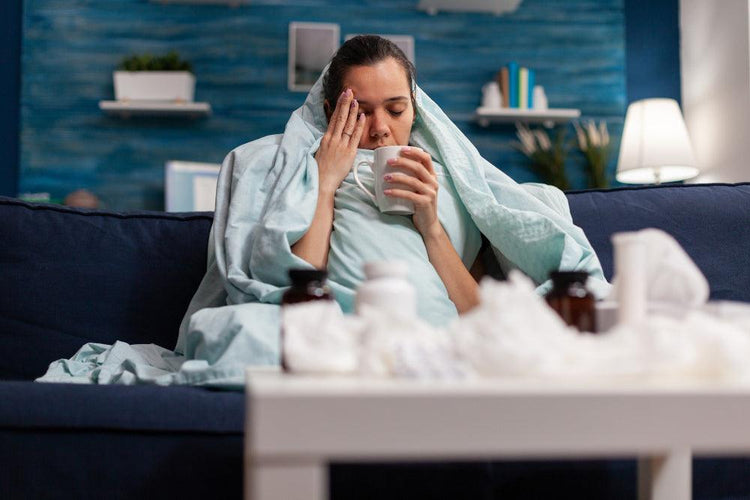

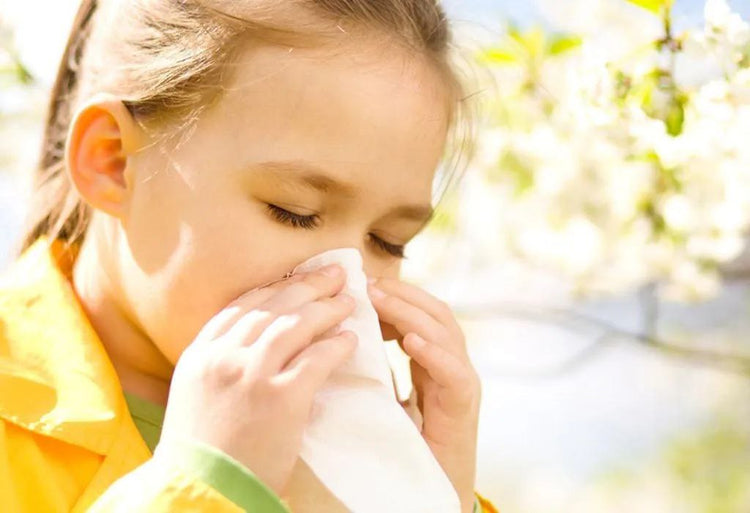
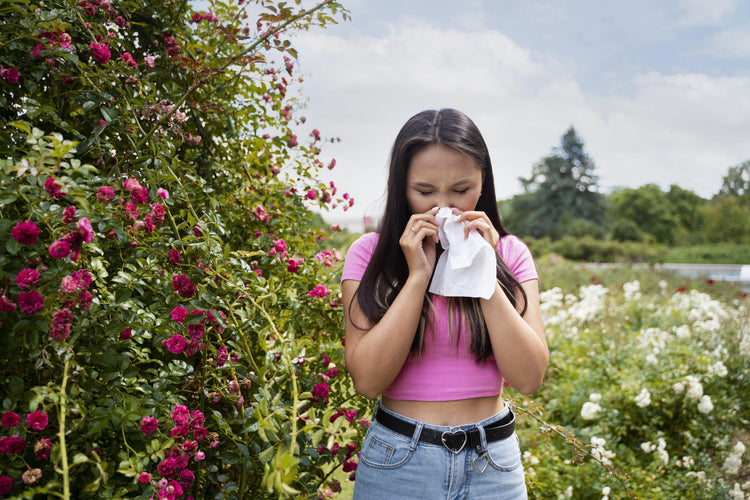
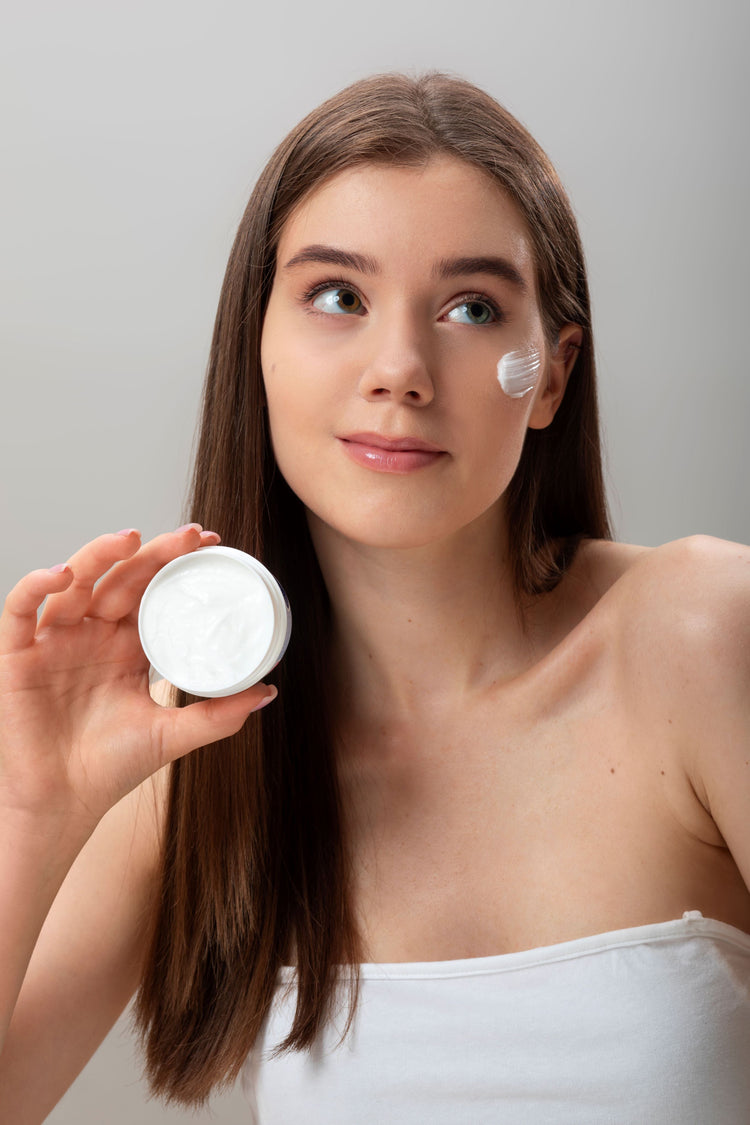
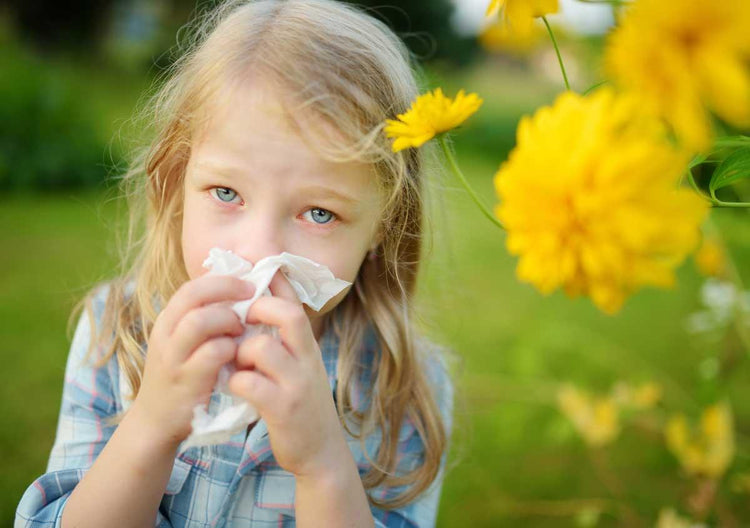
 Rated Excellent by 26,523+ Reviews
Rated Excellent by 26,523+ Reviews